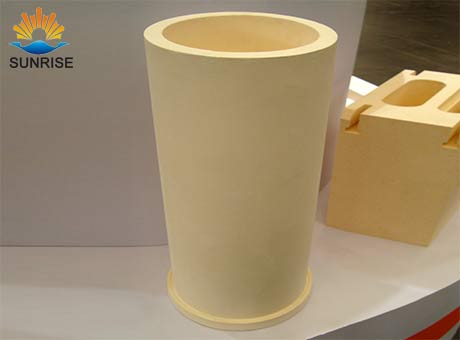Product Search
Quickly find the product you need
Products List
Refractory Knowledge
- Pollution and treatment in the production
- Aggregates Used For the Production of Ins
- Pros and cons of lightweight mullite bric
- Thermal Shock Resistant Fireproof Heat In
- Refractory material production process
- Manufacturing process of fire clay insula
- The Use of Mullite Insulation Bricks
- Classification of mullite insulation bric
- Production Process Methods of Refractory
- the development of the refractory brick i
Products List
- Phone:0086-370-63838939
- Email:sales@sunriserefr.com
- Office Address: No.36 Fengchan Road Of Zhengzhou, Henan, China (Mainland)
Manufacturing process of corundum mullite brick
Date:2019-11-22 15:47 | From:Zhengzhou Sunrise Refractory | Author:admin
The corundum mullite brick is a high-alumina refractory brick composed of corundum and mullite main crystal phases, and the corundum mullite brick refers to a refractory brick made of high-purity or relatively pure raw materials. The presence of low melting point oxide impurities reduces its high temperature performance. Corundum mullite bricks are much more expensive than ordinary high alumina bricks.
Performance: It has good high temperature strength, high temperature creep resistance, thermal shock resistance and erosion resistance. The physical and chemical properties of a typical corundum mullite brick are: Al2O3 ≥ 85%, Fe2O3 0.45%, apparent porosity 19%, normal temperature compressive strength greater than 55 MPa, load softening temperature greater than 1700 ° C, heating line change (1600 ° C, 3 h) ) -0.1%, thermal shock resistance (1100 ° C water cooling) greater than 30 times.

Corundum mullite brick manufacturing process:
The corundum mullite brick is usually made of synthetic mullite. The mullite granules can be used as the aggregate, the α-Al2O3 powder is used as the powder, and the fused or sintered corundum granules can be used as the aggregate and the synthetic mullite powder. Powder. The aggregate and the powder are compounded according to a certain ratio and particle size gradation, and the sulfite pulp waste liquid is used as a binder, and the materials are fed in a certain order. Fully knead evenly and form with a friction brick press or a hydraulic press. After the bricks are dried, they are fired at 1650 ~ 1750 °C.
Some use fused or sintered corundum sand as aggregate, and the bauxite or clay mixed fine powder with a ratio of mullite or corundum mullite is used as a powder to prepare bricks. The corundum mullite bricks produced are slightly less dense, so the process is not widely used.

